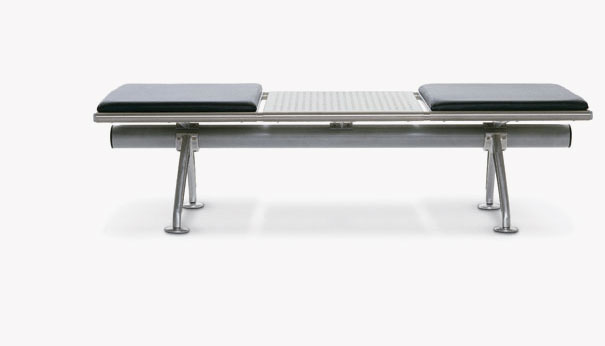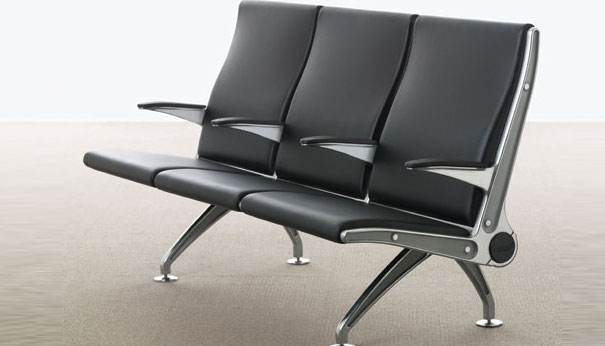Soybeans and Seating: Arconas Goes Green(er) with Airport Seating
Soybeans and seating seem an unlikely combination. But considering that Arconas created airport seating out of resin (see Bernù, designed by Davide Tonizzo in Collaboration with Arcona introduced at #IIDEX 09), it shouldn’t be too surprising that the Canadian company could make this work too. Arconas is the first airport-seating manufacturer to incorporate soy-based BiOH® polyols from Cargill, “giv[ing] airport passengers the opportunity to rest comfortably on a more environmentally responsible choice.”
Flyaway. Designed by Douglas Ball for Arconas.
Made from a renewable source, soybean oil, BiOH polyols are ingredients for flexible foam in products you use daily, from furniture cushions and automotive seating’s to mattresses, mattress toppers and carpet cushion. Soy-based BiOH materials replace a portion of the petroleum ingredients typically used in foam production. Although this has been widely used in residential furniture, it hasn’t been the case with the commercial furniture sector. As the global leader in airport seating, servicing some of the world’s largest airports including Boston Logan, Dallas/Fort Worth, JFK, Hong Kong, La Guardia, Lisbon, Orlando and Ottowa, Arconas stands to make a big environmental impact. “Considering the millions of passengers going through these airports, it is very important for us to provide our clients with the most innovative environmental solutions,” stated Pablo Reich, Arconas’ Executive Vice President. Arconas has been an industry pioneer in design, innovation, and sustainability – and this reinforces that.


According to the company, Arconas has already introduced Cargill’s BiOH polyols for current orders and will increase the percentage of soy-based components during 2010. All of their airport-seating lines adhere to a strict environmental policy and have passed the ANSI/BIFMA emissions test.




Leave a Reply